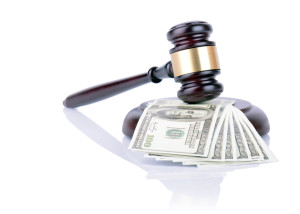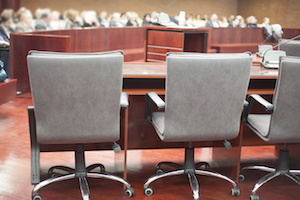The Texas Supreme Court vacated a $350,000 jury verdict last week due to insufficient testimony from the Plaintiff’s expert witness that improperly influenced the award. In an environmental contamination lawsuit between a Texas ranch and its neighboring metal processing plant, the Plaintiff’s case leaned heavily on the testimony of a real estate expert to ascertain long-term property damages. On review, the Texas Supreme Court rejected the reliability of the expert testimony, and struck down the high-dollar judgment.
Texas Ranch Seeks Stigma Damages after Contamination
The case, Houston Unlimited, Inc. Metal Processing v Mel Acres Ranch, arose after Houston Unlimited released liquid waste into a culvert that drained into a stock tank on the Mel Acres Ranch. The Plaintiff requested the Texas Commission on Environmental Quality (TCEQ) to enforce action against Houston Unlimited for noncompliance with environmental regulations, and compel the processing plant to cease operations that risked contamination on ranch lands. After Houston Unlimited took corrective action, the company determined that there was no ongoing effect on Mel Acres Ranch and thought the matter was resolved.
Mel Acres disagreed, and filed a lawsuit seeking damages for a decrease in the fair market value of the ranch due to contamination and the stigma of contamination that effected the ranch’s reputation. According to the lawsuit, the ongoing damage to Mel Acres came in the form of a negative stigma associated with contamination, even if the actual contamination had a minimal or short-term effect on the value of the property. Texas law is not clear on whether stigma damages are allowed in real estate contamination actions, but Mel Acres pursued the option due to no specific legal position denying it.
Mel Acres’ tactic worked, and after trial a Texas jury awarded the Plaintiffs $350,000 for the ongoing effect of negative stigma created by the contamination caused by Houston Unlimited.
Contaminated Ranch Relies on Real Estate Expert for Diminution of Value
Critical to the Plaintiff’s case was the testimony of real estate expert witness, Kathy McKinney. McKinney is a licensed real estate appraiser who was called to testify about the effect contamination had on the lasting value of Mel Acres property. During her expert testimony, McKinney employed a “sales-comparison” appraisal approach to determine Mel Acres’ value when compared to other properties similar in size, location, date of sale, and physical attributes. Based on the comparison, McKinney determined that the Mel Acres Ranch had an “unimpaired” value of $2,329,000, which the Defendant did not dispute.
In determining the “impaired” value, however, McKinney branched off from the “sales-comparison” model due to lack of similarly effected properties to compare Mel Acres to. Instead, McKinney found two properties, both of which had experienced environmental contamination that did not have a long-term effect. In each case, McKinney found that the properties sold for a much lower price than the appraised value, and determined that contamination like Mel Acres had suffered caused a 60{d61575bddc780c1d4ab39ab904bf25755f3b8d1434703a303cf443ba00f43fa4} loss of market value.
Texas Supreme Court finds Contaminated Property Appraisal Unreliable
Although the Texas Supreme Court ducked from the determination of whether or not stigma of formerly contaminated property damages are available under the law, the Justices found no problem dismissing McKinney’s expert witness testimony due to lack of reliable facts and poor methodology. While the Court accepted the sales-comparison approach, it took issue with the method McKinney used to derive the impaired value of Mel Acres that was, in her expert opinion, negatively affected by stigma associated with contamination. Upon examining the details of the two previously contaminated property sales that McKinney compared Mel Acres to, the Court noticed that there were a number of factors that contributed heavily to the reduced sale price, all of which could have had more influence than the environmental contamination. Further, McKinney’s claim that Mel Acres had experienced 60{d61575bddc780c1d4ab39ab904bf25755f3b8d1434703a303cf443ba00f43fa4} reduction of value was based on a guess rather than a formula that could reliable appraise property.
The Texas Supreme Court found McKinney’s entire expert testimony relied on a series of assumptions about proper sales comparisons, and how stigma of contamination could impact property value. Without reliable facts or proven methodology to base her expert testimony on, McKinney was dismissed as a witness because her opinion improperly influenced the trial. Without testimony from a reliable real estate appraisal expert witness, the Court dismissed the jury award for contamination stigma damages.












